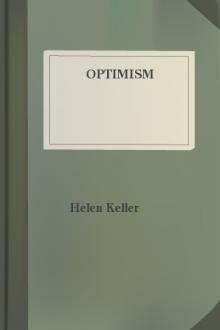Lippincott'S Magazine Of Popular Literature And Science, Volume 26 December, 1880. - Various None (e book reader android txt) 📗

- Author: Various None
Book online «Lippincott'S Magazine Of Popular Literature And Science, Volume 26 December, 1880. - Various None (e book reader android txt) 📗». Author Various None
Besides St. Paul'S, The Comparatively Modern St. John'S Chapel And The
John Street Methodist Church, It Really Has Nothing To Show To The
Tourist In Search Of Ancient Places Of Worship. The Vicinity Can Boast A
Few Colonial Temples--The Quaint Old Dutch Church At Tarrytown, Dear To
The Readers Of Irving; The Tennent Church On The Battle-Ground Of
Monmouth, New Jersey, With Its Blood-Stains Of Wounded British Soldiers;
And A Charmingly Plain Little Friends' Meeting-House, No Bigger Than A
Small Parlor, Near Squan, New Jersey, Being The Most Strikingly
Attractive. In Newark One Notes The Deep-Set Windows And Solid Stone
Walls Of The Old First Presbyterian Church, And The Quiet Plainness Of
Trinity Episcopal Church, Which Looks Like Boston'S King'S Chapel, With
The Addition Of A White Wooden Spire.
Philadelphia Is Richer Than Any Other American City In buildings Of The
Seventeenth And Eighteenth Centuries. On The Older Streets It Is A
Frequent Sight To See Quaint Little Houses Of Imported English Brick
Modestly Laid In alternate Red And Black, Curiously Like The Latest
Modern Fashion. The Ample Room For Growth Possessed By This
Widespreading City Has Saved Many An Ancient House For Present Use As
Dwelling Or Store. One Is Not Surprised, Therefore, To Find On The Old
Streets Near The Delaware Three Churches Of Weather-Stained Brick Which
Seem Trying To Make The Piety Of An Elder Age Useful To The Worshippers
Of To-Day. All Three Of These Churches--Gloria Dei, Christ And St.
Peter'S--Now Have Their Chief Work Among The Poor People Whom One Always
Finds In a Business Quarter Near The River-Front, But Each Attracts, By
Its Old-Time Associations And Its Modern Missionary Spirit, A Goodly
Circle Of Attendants From The Western Parts Of The City. Gloria Dei
Church, The Oldest Of The Three, Was Built In 1700 By Swedish Lutherans
On The Spot Where The Swedish Predecessors Of The Friends Had Located
Their Fortified Log Church Twenty-Three Years Earlier. Its Bell And
Communion-Service And Some Of Its Ornamental Woodwork Were Presented By
The King Of Sweden. It Is Surrounded By The Usual Graveyard, In Which
Lies Alexander Wilson, The Lover And Biographer Of Birds, Who Asked To
Be Buried Here, In a "Silent, Shady Place, Where The Birds Will Be Apt
To Come And Sing Over My Grave." The Old Swedes' Church Retained Its
Lutheran Connection Until Recent Years, When It Became An Episcopal
Parish.
Christ Church And St. Peter'S Were Formerly United In One Parochial
Government, And To The Two Parishes Ministered William White, The First
Church-Of-England Minister In Pennsylvania, The Friend And Pastor Of
Washington, The Chaplain Of Congress And One Of The First Two Bishops Of
Volume 26 Title 1 (Lippincott'S Magazine Of Popular Literature And Science) Pg 38The American Church. The Present Structure Of Christ Church Was Begun In
1727, But Not Finished For Some Years. The Parish Is Older, Dating From
1695. Queen Anne Gave It A Communion-Service In 1708. In 1754 Came From
England Its Still-Used Chime Of Bells, Which Were Laboriously
Transferred During The Revolution To Allentown, Pennsylvania, Lest They
Should Fall Into British Hands And Be Melted Up For Cannon. At Christ
Church A Pew Was Regularly Occupied By Washington During His Frequent
Residence In Philadelphia; And Here Have Been Seated Patrick Henry,
Benjamin Franklin, James Madison And Many Another Patriot, Besides
Cornwallis, Howe, Andre And Others On The English Side. Around And
Beneath The Church Are Many Graves Covered By Weather-Worn Stones, And
On The Walls Of The Interior There Are A Number Of Mural Tablets.
St. Peter'S Church Was Begun In 1758, And Completed Three Years Later.
In Quiet Graciousness Of Appearance It Is Like Another Christ Church,
And Its Interior Arrangements Are Still More Quaint, The Chancel Being
At The Eastern End Of The Church, While The Pulpit And Lectern Are At
The Western. In The Adjoining Churchyard Is A Monument To Commodore
Decatur.
One Cannot Find In all America Sweeter And Quainter Memorials Of A
Gentle Past--Memorials Still Consecrated To The Gracious Work Of The
Present--Than The Churches And Other Denominational Houses In The Old
Moravian Towns Of Pennsylvania. At Bethlehem, As One Stands In The
Little Three-Sided Court On Church Street And Looks Up At The Heavy
Walls, The Tiny Dormer Windows And The Odd-Shaped Belfry Which Mark The
"Single Sisters' House" And Its Wings, One May Well Fancy One'S Self, As
A Travelled Visitor Has Said, In Quebec Or Upper Austria. Still More
Quaint And Quiet Is Willow Square, Behind This Curious House, Where,
Beneath Drooping Willow-Boughs, One Finds One'S Self Beside The Door Of
The Old German Chapel, With The Little Dead-House, The Boys' School And
The Great And Comparatively Modern Moravian Church Near By. Through
Willow Square Leads The Path To The Burying-Ground, Where Lie, Beneath
Tall Trees, Long Rows Of Neatly-Kept Graves, Each Covered With A Plain
Flat Stone, The Men And The Women Lying On Either Side Of The Broad
Central Path. Several Of The Ancient Moravian Buildings Date From The
Middle Of The Last Century. The Widows' House Stands, Opposite The
Single Sisters' Range, And Across The Street From The Large Church Is
The Moravian Seminary For Young Ladies, Established In 1749, And By Far
The Oldest Girls' School In The United States.
It Was In 1778 That The Single Sisters Gave To Pulaski That Banner Of
Crimson, Silk Which Is Commemorated In Longfellow'S Well-Known "Hymn Of
The Moravian Nuns At Bethlehem." The Poem, However, Written In The
Author'S Early Youth, And Preserved For Its Rare Beauty Of Language And
Fine Choice Of Subject, Rather Than For Its Historical Accuracy, Has
Done Much To Perpetuate A Wrong Idea Of The Moravian Spirit And Ritual.
Mr. Longfellow Writes In His First Stanza
When The Dying Flame Of Day
Through The Chancel Shot Its Ray,
Far The Glimmering Tapers Shed
Faint Light On The Cowled Head,
And The Censer Burning Swung,
When Before The Altar Hung
That Proud Banner, Which, With Care,
Had Been Consecrated There;
Volume 26 Title 1 (Lippincott'S Magazine Of Popular Literature And Science) Pg 39And The Nuns' Sweet Hymn Was Heard The While,
Sung Low In The Dim, Mysterious Aisle.
But The Moravians Know Nothing Of Chancels, Tapers, Cowled Heads,
Censers, Altars Or Nuns. Their Faith Has Always Been The Simplest
Protestantism, Their Churches Are Precisely Such As Methodists Or
Baptists Use, And Their Ritual Is Plainer Than That Of The Most
"Evangelical" Episcopal Parish. Their "Single Sisters' Houses," "Widows'
Houses" And "Single Brethren'S Houses"--The Last Long Disused--Are
Simply Arrangements For Social Convenience Or Co-Operative Housekeeping.
Mr. Longfellow'S Poetic Description Applies To The Moravian Ceremonial
No More Accurately Than To A Congregational Prayer-Meeting Or A
Methodist "Love-Feast."
[Illustration: The Moravian Cemetery, Bethlehem, Pennsylvania.]
Beside The Deep And Silent Waters Of The James River In Virginia,
Undisturbed By Any Sound Save The Flight Of Birds And The Rustle Of
Leaves, Stands All That Is Left Of The First Church Building Erected By
Englishmen In america. A Good Part Of The Tower Remains, The Arched
Doorways Being Still Intact, And It Seems A Pitiable Misfortune That The
Honestly-Laid Bricks Of The Venerable Building Could Not Have Come Down
To Our Day. But, As It Is, This Ancient Square Block Of Brick Forms Our
One Pre-Eminent American Ruin. Nothing Could Be A More Solemn Monument
Of The Past Than The Lonely Tower, Surrounded By Thick Branches And
Underbrush And Looking Down Upon The Few Crumbling Gravestones Still
Left At Its Base. Jamestown, Long Abandoned As A Village, Has Now Become
An Island, The Action Of The Waters Having At Last Denied It The
Remaining Solace Of Connection With The Mainland Of The Old Dominion,
Of Whose Broad Acres It Was Once The Chief Town And The Seat Of
Government--The Forerunner Of All That Came To America At The Hands Of
English Settlers.
In The Slumberous Old City Of Williamsburg, Three Miles From Jamestown,
Stands The Bruton Parish Church, Two Hundred And Two Years Old, And
Still The Home Of A Parish Of Sixty Communicants. Built Of Brick, With
Small-Paned Windows And Wooden Tower, Its Walls Have Listened To The
Eloquence Of The Learned Presidents Of The Neighboring William And Mary
College, And Its Floor Has Been Honored By The Stately Tread Of Many A
Colonial Governor, Member Of The Legislature Or Revolutionary Patriot;
For Williamsburg Was The Capital And Centre Of Virginia Until The End Of
The Eighteenth Century, And Shared Whatever Virginia Possessed Of
Political Or Personal Renown. Washington, Of Course, Was More Than Once
An Attendant At Bruton Church, And So Were Jefferson And Patrick Henry
And An Honorable Host. In The Church And In The Chapel Of William And
Mary College--Which The Ambitious Colonists Used To Think A Little
Westminster Abbey--Was The Religious Home Of A Good Share Of What Was
Stateliest Or Most Honorable In The Early Colonial Life Of The South.
Other Old Churches Still Dot The Virginia Soil--St. John'S, Richmond;
Pohick Church, Westmoreland County; Christ Church, Lancaster County; St.
Anne'S, Isle Of Wight County. Their Antiquities, And Those Of Other
Ancient Sanctuaries Of The Old Dominion, Have Been Painstakingly Set
Forth By Bishop Meade And Other Zealous Chroniclers, And Their
Attractiveness Is Increased, In Most Cases--As At Jamestown--By The
Loneliness Of Their Surroundings. Another Old Church, Left In The Midst
Volume 26 Title 1 (Lippincott'S Magazine Of Popular Literature And Science) Pg 40Of Sweet Country Sights And Gentle Country Sounds, Is St. James'S, Goose
Creek, South Carolina. St. Michael'S And St. Philip'S At Charleston In
The Same State Have Heard The Roar Of Hostile Cannon, But Have Come
Forth Unscathed. The Demolished Brattle Street Church In boston Was Not
The Only One Of Our Sacred Edifices To Be Wounded By Cannonballs, For
The Exigences Of The Fight More Than Once, During The Revolution And
The Civil War, Brought Flame And Destruction Within The Altar-Rails Of
Churches North And South.
The Growth Of The Roman Catholic Church In america Has Been So Recent
That It Can Show But Few Historical Landmarks. The Time-Honored
Cathedral At St. Augustine, Florida, And The Magnificent Ruin Of The San
Jose Mission Near San Antonio, Texas, And One Or Two Weather-Stained
Little Chapels In The North-West, Are Nearly All The Churches That Bring
To Us The Story Of The Priestly Work Of The Roman Ecclesiastics During
The Colonial Days.
We Have No State Church, And The Different Presidents Have Made A Wide
Variety Of Choice In Selecting Their Places Of Worship In Washington.
St. John'S, Just Opposite The White House, Has Been The Convenient
Sunday Home Of Some Of Them: Others Have Followed Their Convictions In
Methodist, Presbyterian, Unitarian And Other Churches. But The City Of
Washington





Comments (0)